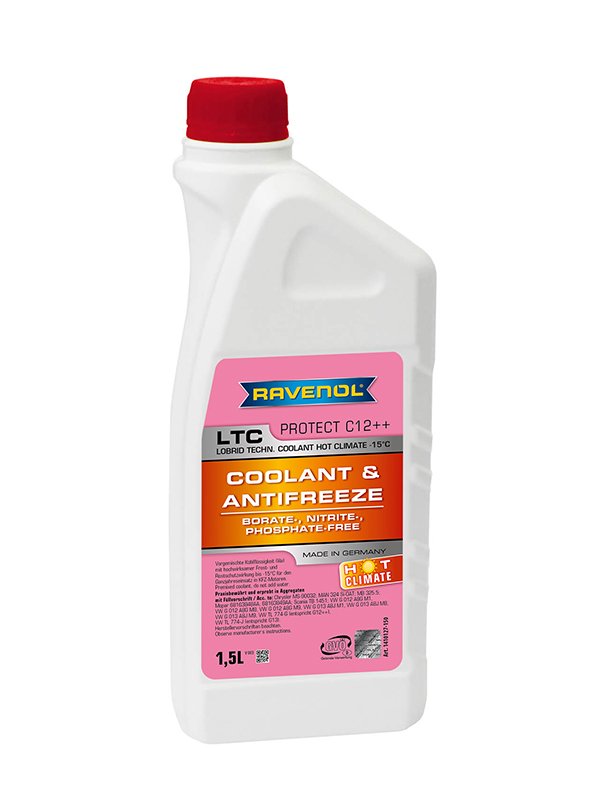RAVENOL LTC Lobrid Tech. Coolant HOT CLIMATE -15°C is a ready to use, prediluted with water, eco-friendly 1.2- Ethanediol (monoethylene glycol) based coolant for cooling circuits in combustion engines which provides maintenance-free corrosion and frost protection. This product is formulated based on a proven inhibitor development by combining silicates with the organic additive technology OAT as an extended life coolant.
RAVENOL LTC Lobrid Tech. Coolant HOT CLIMATE -15°C is free from 2-ethylhexanoic acid, borate, nitrite, amine and phosphate.
The quality of an antifreeze is no longer just determined by the antifreeze effect (which automatically exists in an ethylene-glycol based product), but by the rust protection.
That is why automakers subject antifreeze to lengthy corrosion and cavitation tests.
RAVENOL LTC Lobrid Tech. Coolant HOT CLIMATE -15°C protects the cooling system from rust, frost, and in summer, from overheating.
Application Note
RAVENOL LTC Lobrid Tech. Coolant HOT CLIMATE -15°C is a prediluted coolant with frost and rust protection for year-round use in automotive engines.
Even in summer coolant must contain enough antifreeze to ensure good corrosion and overheating protection.
Instructions: Add RAVENOL LTC Lobrid Tech. Coolant HOT CLIMATE -15°C to radiator to fill line.
Characteristics
- Excellent for all-aluminium engines
- Good reserve alkalinity
- Premium corrosion additives for optimal rust protection for all metals and metal alloys used in cooling systems, including aluminium
- Prevents sediments and foaming in the cooling system
- Compatible with elastomers used in automotive radiators
- Can be mixed with other coolant types
Technical Product Data
| Property | Unit | Data | Audit |
|---|---|---|---|
| Density at 20 °C | kg/m³ | 1043,0 | EN ISO 12185 |
| Colour | violett | VISUELL | |
| pH - value at 20 °C | 8,0 | ASTM D1287 | |
| Freezing point | °C | -15 | ASTM D1177 |
All indicated data are approximate values and are subject to the commercial fluctuations.






